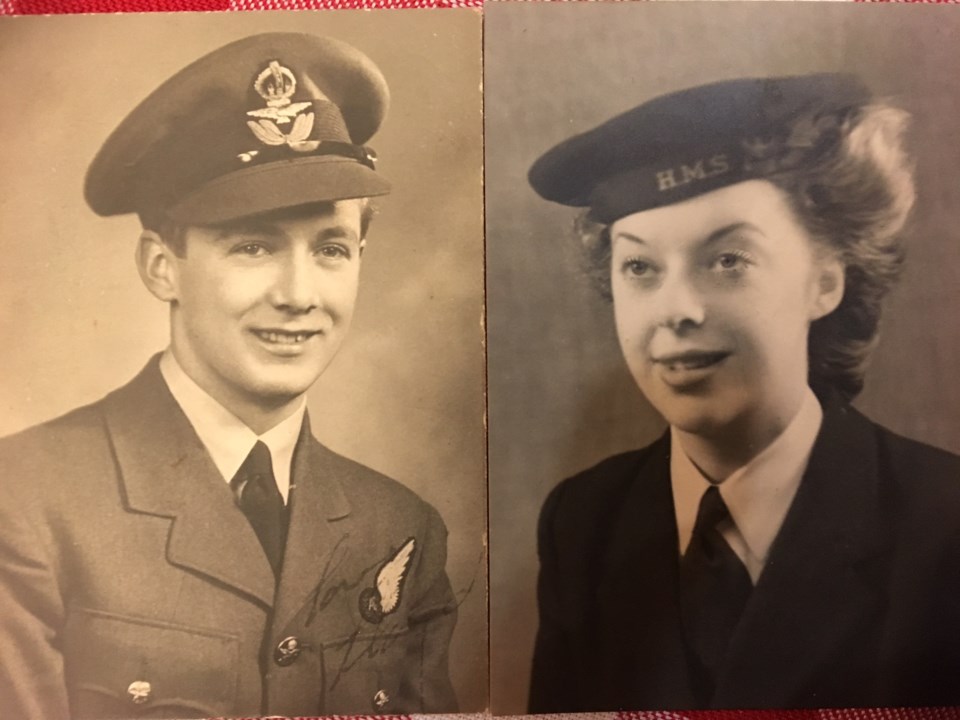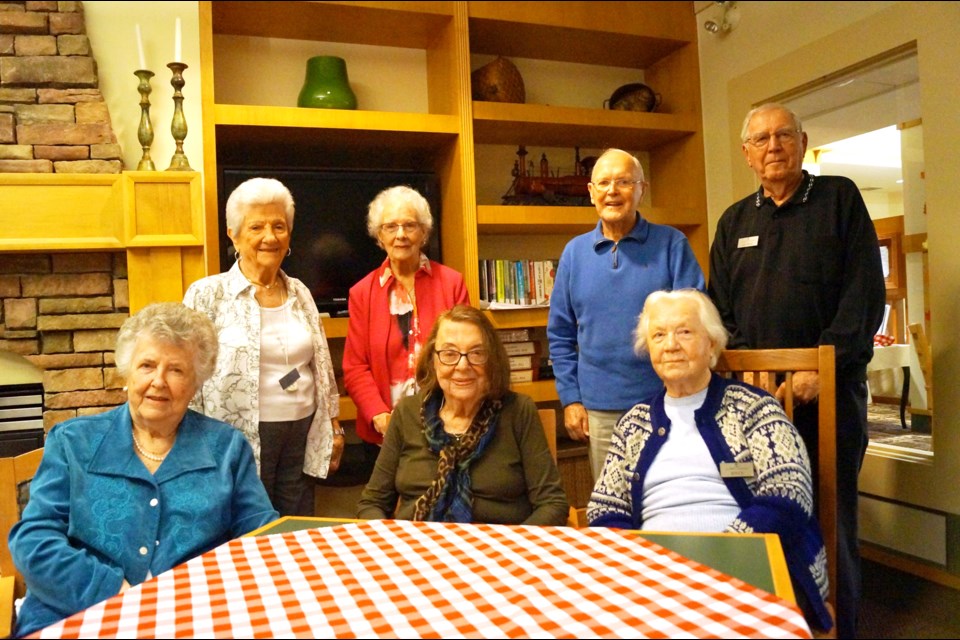Lois Blanchard Noble
On the home front, in Toronto, Lois Blanchard Noble recalls being a young girl whose family was on rations during the Second World War.
“I was only age three or four when I was taking blue tokens down to Loblaws to get a pound of hamburger. We had blue tokens and we were only allowed so many,” said Noble.
Both her mother and father stayed home during the war. Noble’s mom helped pack medical supplies at a nearby warehouse while her father worked as a type setter for Canadian Press.
“They had a very important role, getting information across,” said Noble.
Noble said her father also stayed home to look after the family.
“I think he felt what he did was the right thing.”
Still, it was difficult for a man not to go overseas, as he would not have heroic stories to tell. “People may not mention it,” after the war, she said.
Violett Moldowan
It didn’t take long for Jimmy Smith, Violett Moldowan’s boyfriend of four years, to enlist in the Canadian Air Force when Canada entered WWII.
“All the young men were fighting for our country. I guess it’s patriotism, something that surges. Young men are always looking for excitement,” said Moldowan.
She was left to live in a house in Downtown Vancouver where her mom operated a make-shift hotel.
“Mother rented rooms for $2 a week. We lived in the kitchen and the dining room. The back porch was enclosed, so that was the second bedroom,” she explained.
As part of the total war effort, Moldowan, who was 19 when war broke out, drove trucks to the port to take supplies overseas. She’d work other odd jobs on top of that.
Women were essential to the war but the respect didn’t last long afterwards.
“They were told to go back to the kitchen where they ‘belonged,’” said Moldowan, who more than doubled her salary to $18 a week at Hudson’s Bay Co. after taking a computing course.
Smith would later die in Belgium, where Moldowan later visited to pay homage.

George Langevin
“I can’t remember a darn thing, except I had my first beer on VE Day,” chuckled George Langevin, now 86.
Raised in the small Alberta town Hanna, the Second World War shaped how Langevin, age 9 at the outset of the war, would later live his life and how he viewed the world.
The impression the war left on him came after its conclusion, when he enlisted in the Canadian Air Force in 1951 at age 21.
“It didn’t take me long to realize I have to get a trade,” he said.
And so, with his wife, he spent five years in Germany, including when the Berlin Wall went up.
“It made you feel very uneasy, I’ll tell you,” he said.
Still, it was the “best five years of our lives.”
Langevin went on to work as an airplane mechanic with CP Air for 20 years.
Natalie Montgomery
Living in a small town in Alberta was a different experience than living in a big city during the outset of WWII, said Natalie Montgomery
The town of Grand Prairie was “devastated. Every young man disappeared to go to war,” she said.
Her brother was put into the military police. Meanwhile, five neighbours, all young men, didn’t come back, including her boyfriend (Bill Russ, who was shot down over the English Channel).
“It changed life completely. In Grand Prairie there were hardly any young men left.”
War for Canada came as a surprise in the small town, she said.
“We thought that was impossible. We were far north, we couldn’t imagine. We felt isolated. You didn’t get all the news right away. We only had the radio,” explained Montgomery, who as a young teen girl worked in the local theatre taking tickets.
Later in the war she studied in Edmonton and worked for Massey Harris Limited, an agriculture equipment manufacturer that designed the Mosquito bomber.
“Any time I see a Mosquito bomber I’m there; I want to know what it’s doing. There’s not many left,” said Montgomery.
Jim Gray
One of few WWII veterans at Gilmore Gardens, Jim Gray recalls interesting but trying times stationed in the Middle East for three years.
Among the memories are being on rat-infested transport boats, such as the SS Ile de France, with hundreds of other men.
There were better times ahead when Gray got stationed and put his feet on land.
Gray was actually a member of the Royal Air Force.
“I joined up when I was 17. I wanted to go in the Air Force because if I had waited I’d have gone into the army. I became an armourer, bombs and guns,” he explained.
Gray loaded ammunition into planes and on to ships for transport.
“As an armourer we had to take bombs and put them aboard the ship and take them down the creek into the ocean . . . That kind of thing,” said the Edinburgh, Scotland native.
While in the Middle East the armies had moved up north, more toward Italy, so much of the loading he was doing was for bomber practice.
Gray recalls docking in ports such as Dakar, Freetown, Bombay and Jask. He was stationed for some time in Cairo.
When the war ended, “I wanted out as quickly as possible,” he chuckled.
Gray came to Canada to be closer to family and taught industrial education in high school.
Betty Lefroy
For many, the war meant the end of life and the end of any prospects for a family in the near term. Betty Lefroy and her husband Tony Lefroy avoided such tragedy despite Tony being put on dangerous trans-Atlantic convoy duty.
Like “a lot of prairie boys did” Tony, then Betty’s boyfriend, joined the navy to avoid being in the army at the outset of Canada entering the war.
He was first shipped to Victoria to watch out for Japanese attacks but later shipped to Scotland.
As a junior officer, “he found himself in charge of a post office,” said Betty. “The bosses came in one day and told him he was fired. He asked why and they told him there was no way to demote him if he made a mistake. So they sent him to officer school back in Edmonton.”
While on leave, the two married in 1944. Betty was 21, just the right age.
“In those days you couldn’t marry before 21 without your parents’ permission. And my dad said no way, you have to finish your education first, then you can get married,” said Betty.
After the wedding, Tony returned to convoy duty.



